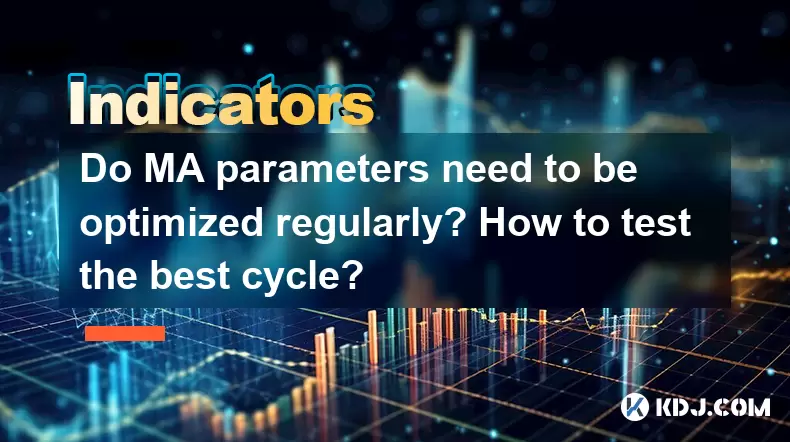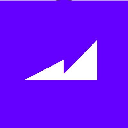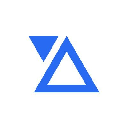-
 bitcoin
bitcoin $109547.008142 USD
0.04% -
 ethereum
ethereum $4011.838726 USD
-0.05% -
 tether
tether $1.000402 USD
-0.01% -
 xrp
xrp $2.798606 USD
0.88% -
 bnb
bnb $970.877944 USD
1.39% -
 solana
solana $202.237275 USD
-0.95% -
 usd-coin
usd-coin $0.999673 USD
0.00% -
 dogecoin
dogecoin $0.229294 USD
-1.15% -
 tron
tron $0.336370 USD
-0.45% -
 cardano
cardano $0.777260 USD
-1.66% -
 hyperliquid
hyperliquid $45.503019 USD
1.73% -
 ethena-usde
ethena-usde $1.000362 USD
0.01% -
 chainlink
chainlink $20.785303 USD
-1.10% -
 avalanche
avalanche $28.755822 USD
-0.11% -
 stellar
stellar $0.358303 USD
-0.48%
Do MA parameters need to be optimized regularly? How to test the best cycle?
Regular optimization of MA parameters is crucial in crypto trading to adapt to market changes; backtesting helps find the best settings for enhanced performance.
May 21, 2025 at 03:00 pm

In the world of cryptocurrency trading, the Moving Average (MA) is a popular technical indicator used to smooth out price data and identify trends over time. The question of whether MA parameters need to be optimized regularly and how to test the best cycle is crucial for traders looking to refine their strategies. This article delves into these aspects, providing detailed insights and practical steps to enhance trading performance using MAs.
Understanding Moving Averages and Their Parameters
Moving Averages (MAs) are fundamental tools in technical analysis, helping traders to identify the direction of the market and potential reversal points. The two most common types of MAs are the Simple Moving Average (SMA) and the Exponential Moving Average (EMA). The parameters of an MA refer to the number of periods used to calculate the average. For instance, a 50-day SMA calculates the average price over the last 50 days.
The choice of these parameters can significantly affect the sensitivity and responsiveness of the MA to price changes. A shorter period MA will be more responsive to recent price changes, while a longer period MA will provide a smoother line that is less affected by short-term fluctuations. The effectiveness of an MA in a trading strategy depends on these parameters, making their optimization a critical task.
The Need for Regular Optimization of MA Parameters
The cryptocurrency market is known for its volatility and rapid changes in market conditions. As such, MA parameters that were effective in the past may not remain optimal over time. Factors such as increased trading volumes, new market entrants, regulatory changes, and shifts in investor sentiment can all impact the performance of an MA.
Regular optimization of MA parameters ensures that the indicator remains aligned with current market dynamics. Without periodic adjustments, traders risk using outdated parameters that no longer provide accurate signals, leading to missed opportunities or unnecessary losses. Therefore, staying vigilant and routinely reassessing MA settings is essential for maintaining a robust trading strategy.
Methods for Testing the Best MA Cycle
To determine the most effective MA cycle, traders employ various testing methods. One of the most popular approaches is backtesting, which involves applying the MA strategy to historical data to evaluate its performance. Here’s a detailed guide on how to conduct backtesting for MA optimization:
Select a Backtesting Platform: Choose a reliable backtesting software or platform that supports cryptocurrency data. Examples include TradingView, MetaTrader, or specialized crypto backtesting tools like Cryptohopper.
Define Your MA Parameters: Start with a range of MA periods you want to test. For example, you might test SMAs from 10 to 200 days in increments of 10 days.
Set Up Your Backtest: Input your chosen MA parameters into the backtesting platform. Ensure that you set the correct time frame (e.g., daily, hourly) and the cryptocurrency pair you are analyzing.
Run the Backtest: Execute the backtest and analyze the results. Look for metrics such as profit factor, win rate, and drawdown to assess the performance of each MA setting.
Analyze and Compare Results: Compare the performance of different MA cycles. Identify which settings yield the best results in terms of profitability and risk management.
Iterate and Refine: Based on the backtest results, refine your MA parameters. You might need to run additional backtests with narrower ranges or different types of MAs (e.g., switching from SMA to EMA) to fine-tune your strategy.
Practical Example of MA Optimization
Let’s consider a practical example of optimizing MA parameters for Bitcoin (BTC/USD) trading. Suppose you are using a dual MA crossover strategy, where a short-term MA (e.g., 20-day) and a long-term MA (e.g., 50-day) are used to generate buy and sell signals.
Initial Setup: Start with the 20-day and 50-day SMAs and backtest this strategy over the past year.
Backtest Results: After running the backtest, you find that the strategy has a profit factor of 1.5 but a high drawdown. This indicates that while the strategy is profitable, it also experiences significant losses at times.
Optimization: To improve the strategy, you decide to test different combinations of short-term and long-term MAs. You run backtests with short-term MAs ranging from 10 to 30 days and long-term MAs from 40 to 60 days.
Refined Results: The backtest shows that a 15-day SMA and a 55-day SMA yield a higher profit factor of 1.8 with a reduced drawdown. This suggests that these new parameters might be more suitable for current market conditions.
Implementation: Implement these optimized parameters in your live trading strategy and monitor their performance over time.
Monitoring and Adjusting MA Parameters
Even after optimizing your MA parameters, continuous monitoring and adjustment are necessary. The cryptocurrency market evolves rapidly, and what works today may not be as effective tomorrow. Here are some tips for ongoing monitoring:
Regular Review: Set a schedule to review your MA strategy’s performance at least monthly. Analyze key performance indicators like profitability, win rate, and drawdown.
Market Analysis: Stay informed about market news and trends that could impact your trading strategy. Adjust your MA parameters if you notice significant shifts in market behavior.
Dynamic Optimization: Consider using adaptive algorithms that automatically adjust MA parameters based on real-time market conditions. While more complex, these methods can help keep your strategy optimized without constant manual intervention.
Tools and Resources for MA Optimization
Several tools and resources can aid in the optimization of MA parameters. Here are some notable options:
TradingView: Offers comprehensive backtesting capabilities and a vast array of technical indicators, including MAs. Its user-friendly interface makes it accessible for traders of all levels.
Cryptohopper: A dedicated crypto trading bot that supports backtesting and strategy optimization. It can be particularly useful for automating MA parameter adjustments.
QuantConnect: A platform for algorithmic trading that allows for detailed backtesting and optimization of trading strategies, including those using MAs.
Technical Analysis Books: Books like “Technical Analysis of the Financial Markets” by John J. Murphy provide in-depth insights into using MAs and optimizing them for different market conditions.
Frequently Asked Questions
Q: Can I use the same MA parameters across different cryptocurrencies?A: While it’s possible to use the same MA parameters for different cryptocurrencies, it’s generally not advisable. Each cryptocurrency has its own unique market dynamics, and what works for Bitcoin might not be effective for Ethereum or altcoins. It’s best to optimize MA parameters for each cryptocurrency individually.
Q: How often should I backtest my MA strategy?A: The frequency of backtesting depends on market volatility and your trading style. For highly volatile markets like cryptocurrencies, backtesting every month can help keep your strategy aligned with current conditions. However, if you notice significant changes in market behavior, more frequent backtesting might be necessary.
Q: Is it better to use SMA or EMA for cryptocurrency trading?A: The choice between SMA and EMA depends on your trading goals and the specific market conditions. SMA provides a smoother line and is less sensitive to recent price changes, making it suitable for identifying long-term trends. EMA, on the other hand, gives more weight to recent prices, making it more responsive to short-term movements. Many traders use a combination of both to get a comprehensive view of the market.
Q: Can automated tools completely replace manual MA parameter optimization?A: While automated tools can significantly streamline the optimization process, they cannot completely replace manual oversight. Human judgment is crucial for interpreting backtest results and making strategic adjustments based on broader market trends and personal trading goals. Automated tools should be used as aids, not replacements, for manual optimization.
Disclaimer:info@kdj.com
The information provided is not trading advice. kdj.com does not assume any responsibility for any investments made based on the information provided in this article. Cryptocurrencies are highly volatile and it is highly recommended that you invest with caution after thorough research!
If you believe that the content used on this website infringes your copyright, please contact us immediately (info@kdj.com) and we will delete it promptly.
- Whale Movements, XPL Token, and Hyperliquid: Decoding the Crypto Tides
- 2025-09-28 14:25:14
- BullZilla Roars: Presales, Ripple, and TRON in the Crypto Jungle
- 2025-09-28 14:25:14
- Nation-State Bitcoin Adoption: Samson Mow's Perspective on the 'Suddenly' Moment
- 2025-09-28 14:45:12
- XRP Price, WallStreetBets, and Rally Prediction: A New Era?
- 2025-09-28 14:45:12
- Pi Network, Sign Protocol, and the Binance Listing Buzz: What's the Deal?
- 2025-09-28 14:30:01
- BTC, HODLers, and a Potential Bull Run: A New Yorker's Take
- 2025-09-28 14:30:01
Related knowledge

What is a tower bottom candlestick pattern? Does it have a high success rate?
Sep 22,2025 at 07:18am
Tower Bottom Candlestick Pattern Explained1. The tower bottom candlestick pattern is a reversal formation that typically appears at the end of a downt...

What is a black hole pattern in the MACD indicator? Is it a cause for concern?
Sep 21,2025 at 06:54pm
Bitcoin's Role in Decentralized Finance1. Bitcoin remains the cornerstone of decentralized finance, serving as a benchmark for value and security acro...

How can I use the psychological line (PSY) to determine market sentiment?
Sep 17,2025 at 02:19pm
Understanding the Psychological Line (PSY) in Cryptocurrency TradingThe Psychological Line, commonly referred to as PSY, is a momentum oscillator used...

How can I determine if a double top pattern has officially formed?
Sep 21,2025 at 03:18am
Understanding the Structure of a Double Top Pattern1. A double top pattern consists of two distinct peaks that reach approximately the same price leve...

What is the Golden Valley pattern on the moving average? Is it better than the Silver Valley pattern?
Sep 21,2025 at 02:54pm
Understanding the Golden Valley Pattern in Moving Averages1. The Golden Valley pattern is a technical formation observed in cryptocurrency price chart...

What does a death cross of the RSI in the strong zone (above 50) mean?
Sep 17,2025 at 10:54pm
Understanding the Death Cross in RSI Context1. The term 'death cross' is traditionally associated with moving averages, where a short-term average cro...

What is a tower bottom candlestick pattern? Does it have a high success rate?
Sep 22,2025 at 07:18am
Tower Bottom Candlestick Pattern Explained1. The tower bottom candlestick pattern is a reversal formation that typically appears at the end of a downt...

What is a black hole pattern in the MACD indicator? Is it a cause for concern?
Sep 21,2025 at 06:54pm
Bitcoin's Role in Decentralized Finance1. Bitcoin remains the cornerstone of decentralized finance, serving as a benchmark for value and security acro...

How can I use the psychological line (PSY) to determine market sentiment?
Sep 17,2025 at 02:19pm
Understanding the Psychological Line (PSY) in Cryptocurrency TradingThe Psychological Line, commonly referred to as PSY, is a momentum oscillator used...

How can I determine if a double top pattern has officially formed?
Sep 21,2025 at 03:18am
Understanding the Structure of a Double Top Pattern1. A double top pattern consists of two distinct peaks that reach approximately the same price leve...

What is the Golden Valley pattern on the moving average? Is it better than the Silver Valley pattern?
Sep 21,2025 at 02:54pm
Understanding the Golden Valley Pattern in Moving Averages1. The Golden Valley pattern is a technical formation observed in cryptocurrency price chart...

What does a death cross of the RSI in the strong zone (above 50) mean?
Sep 17,2025 at 10:54pm
Understanding the Death Cross in RSI Context1. The term 'death cross' is traditionally associated with moving averages, where a short-term average cro...
See all articles










































































